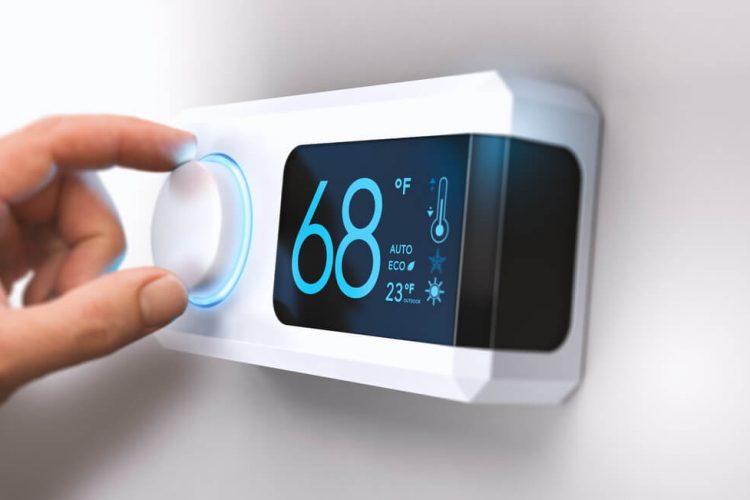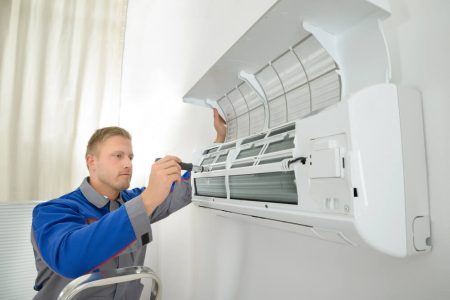As a homeowner, the question of what temperature to set the thermostat will be on your mind a few times every year. The answer to this question is not a simple one. Superior HVAC Repair Spring, who is an expert in HVAC in Spring TX, says, that’s because there isn’t a single specific temperature that you should set your thermostat too. Especially, since there are different financial and energy usage concerns from one family and home to the next.
Summer
The invention of air conditioning offers us a refreshing escape from the dreaded summer heat. But the temperature to set the air conditioner will all depend on finding the delicate balance between your family’s comfort level and your financial bottom line. Those are the two main things that everybody considers when they make these decisions.
As you well know, the lower you set your thermostat in the summer, the higher your energy bill will be. Though if you work to find that balance you may well be able to keep you and your family comfortable while saving money. It’s the worst when are sweating on the couch and trying to relax.
The United States, Department of Energy recommends that you should set your thermostat to 78˚F when you are at home. Setting your air conditioner at this temperature will let you be able to stay cool and helps to keep you from getting an unusually high electric bill.
But if you still aren’t comfortable enough, you could invest in a dehumidifier, and follow a few tips below, according to the Direct Energy company.
I know that setting your thermostat at 78˚F may sound a little bit high. But if you help your air conditioner out a little bit you will be able to provide better cooling for less energy. The overarching theme is to prevent warm air from getting into your house and stopping cool air from escaping.
Following these simple tips will help you keep your house cool and comfortable all summer long, without that energy bill burning a hole in your pocket:
- First, you should hang up window treatments that will block out the sunlight and prevent heat from entering through the window.
- Install new weather-stripping and caulk around doors and windows to keep your home sealed.
- Limit the use of appliances that generate heat, like the oven or stove, until after 8 PM and try to grill outside as much as possible.
- Install ceiling fans to increase cooling efficiency.
- Replace cooling units with energy-efficient models.
Finding that balance will require trial and error. According to the American Society of Heating, Refrigerating and Air Conditioning Engineers, the preferred temperature range for occupants dressed in summer clothes is between 73˚F and 79˚F.
The National Institute of Health says that you can get the best sleep when your body reaches “thermoneutrality”. This is when the temperature is at 86˚F when nude and uncovered or at 60˚F to 66˚F when wearing pajamas and covered by one sheet.
So, a good temperature to set your thermostat when asleep is at 80˚F when using lighter bedding and sleepwear. It helps when there is a fan as well. A great way to do this is to invest in a programmable thermostat.
Winter
During the winter months, you will still need to find that balance, between comfort and affordability, to get the best bang for your buck. But I can give you some general recommendations for what temperature to set your thermoset during the winter.
If someone is at home during the day, a good place to start would be 73˚F, but it would be better to aim for something more like 68˚F. But if nobody is home during the day, or if you are asleep at night, Direct Energy, suggests that you should set the temperature to be between 62˚F and 66˚F.
But then again, instead of finding the perfect number, you will be better off by creating an energy-efficient winter heating strategy that will keep your house warm and your thermostat settings reasonable so that you won’t have to pay that huge energy bill at the end of the month. Here are a few tips and tricks to help.
- Set your thermostat to your desired temperature.
- When you and your family start to get acclimated to the colder weather, you can lower the temperature of the house by one degree each week.
- According to the United States Department of Energy, decreasing the temperature by a single degree that is maintained for just eight hours can reduce your house’s energy bill by 1 percent.
- So by lowering the temperature more and keeping these lower temperatures for longer periods of time will increase the amount of savings you get. The best part is you probably won’t notice the slight change because it is such a slow and gradual change.
Again, I need to emphasis the importance of investing in a programmable thermostat. We all forget sometimes and with a programmable thermostat, you will be able to set it and forget it.
It will let you save money when you aren’t home and feel comfortable when you are. They aren’t that expensive, and they are intuitive. And don’t we all want to save some of that hard-earned money?



